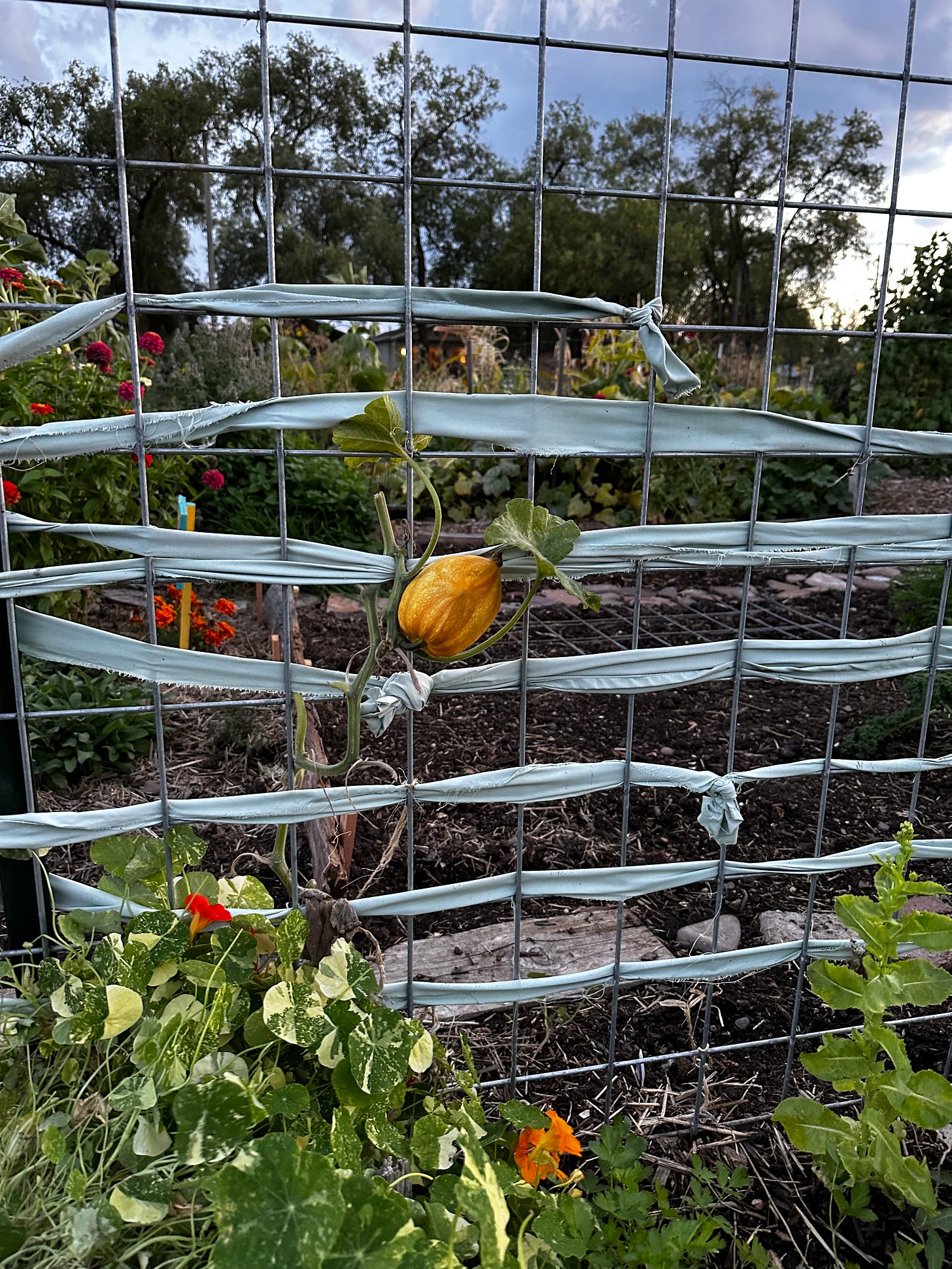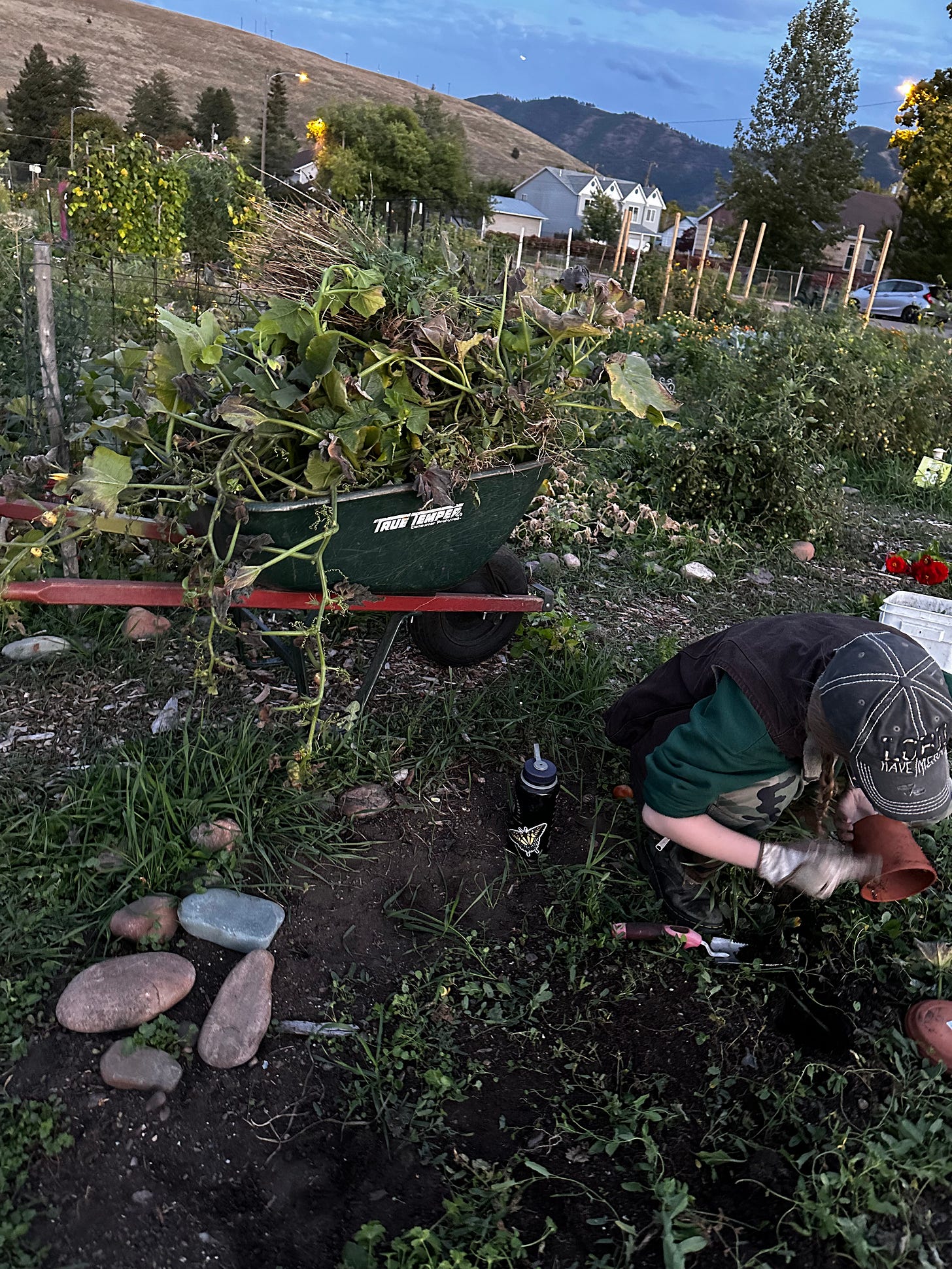This summer season has wound its way to autumn, which is clearly the very best season, at least in Montana. The crisp mornings of bluebird days, maples aflame, lazy insects floating in the afternoon sun…you cannot find a better place to be.
The cool nights inevitably lead to garden thoughts, such as “should I cover the tomatoes? The pumpkins are already lost.” Winterize! today’s community garden email fairly shouted. There’s a checklist, and a deadline, and deposits to be regained. So organized, so regimented. The garden plots, though, tell a different story.
All through late summer, zucchini and pumpkin plants low to the ground crept brazenly across walkways, rendering them impassable, especially with a wheelbarrow. Where vines didn’t set up a blockade, six-foot sunflowers drooped in unison, swaying into spaces so you must lean or duck to pass. Their spiny stalks and leaves snagged your clothing and whispered, “we’re still here.” Zinnias grew with abandon and the tomato plants were perennially decorated in red like Christmas trees. Nobody had picked them in ages because everyone had buckets of fresh tomatoes at home. The garden plots seemed to be challenging us: Who’s in charge here? Not you. Not you.

Adding to the mayhem, peppy cosmos and California poppies don’t seem to mind the darkening days and chilly nights, lending color to every plot where they continue to flourish. I picked my gaggle of fire-engine red zinnias this week when my daughter and I went one evening to pull out our plants and to plan where to place our garlic and daffodil bulbs in the next couple of weeks.
It’s not just us. Marnie is one of the most prolific and ever-present gardeners in our community garden. She has an adventure cat named Soo Soo whom she brings to her plot on a leash. Marnie grew her gourds up a trellis and maintained gorgeous vegetables all summer. But even Marnie’s garden is shutting down in anticipation of the long winter. She’s removed most of her produce, and some of her neighbors have started covering their plots with straw.
The garden was a different place in July, all the community plot tenants so dedicated to the craft of creating a lovely respite where healthful and beautiful things grow with care and love. The walkways were weeded and mulched responsibly,1 and people turned up every evening to water, water, water. I met Laura on one side, and Steve on the other. The lady with the corn doesn’t speak English but her granddaughter said hello on her behalf. Flowers of all kinds surged proudly toward the sun, while peas on trellises were encouraged to climb ever higher. Jaunty hand-painted signs proclaimed the names of gardens and sometimes their contents.
That high summer garden wouldn’t recognize this early fall place at all, where zucchini leaves sag blackened and soft and tomatoes rot on shaggy bushes. Cornstalks rustle in the cool breezes while their sunflower neighbors feed goldfinches by the dozen. Pumpkins shout from weedy plots like huge orange beacons. Summer’s tended berry patches lie in heaps like compost. Those now-faded signs tilt a little too far for jauntiness and seem to announce that nobody’s home. A sudden dust devil teases a few pieces of straw into a tiny tornado over someone’s sprawling kale plants. The whole place has gone back to wildness and nobody cares at all.
Come March I will trudge through the snow-wasted field, not caring where I place my boots in the flat white expanse. I’ll already be dreaming of spring so far off. I’ll search for my plot underneath that soggy blanket, guided perhaps by a single daffodil daring to show its face to the approaching season.
except, perhaps, mine




